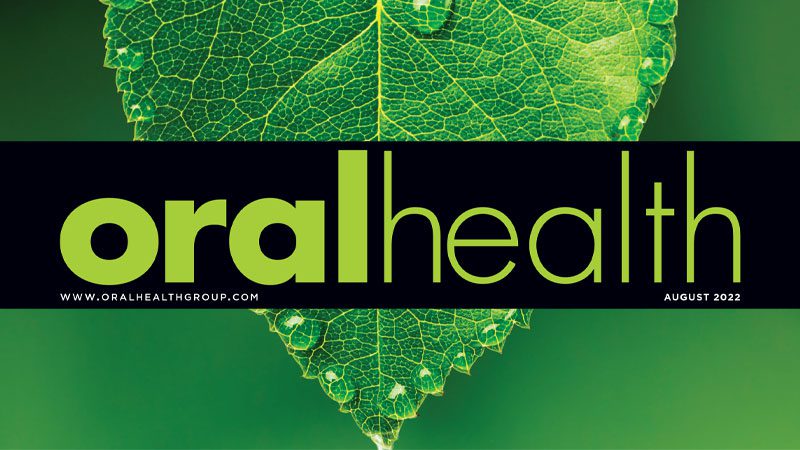The opportunity to learn many lessons has been hurled upon us over the last two and a half years. We have seen storms come and go and temperatures rise to new limits. We have also witnessed almost every aspect of our lives be disrupted by an infectious agent so small it cannot be seen by the naked eye. This nearly invisible agent has impacted life on this planet in such a way that no one can be blind to its effect. Nature surrounds us, may it be as minuscule as a virus or as all-encompassing as the rise of global temperatures. Nature can be described with many words: unrelenting, unabating, fierce. I prefer to see nature as persistent. It is steady and it is always there, with us, surrounding our families and our patients. Any dental treatment we provide is completely immersed in it and our treatment should be driven by it.
For me personally, over the last few years, I have learned that although the course may change and evolve, as long as we are here, our journey continues. We must adapt to the new world around us. Amid the changes, we also maintain the freedom to choose to remain true to our own personal quest and to continue our commitment to the missions we have set for ourselves. Though these missions may be unique to each of us, we, as dental professionals, have a shared goal: to actively participate in the promotion and provision of optimal oral health. We can achieve this goal through academia, providing oral care, research and supporting the teams we work with.
The provision of dental implant treatment is performed within the context of nature. Over multiple decades, extensive research has been conducted on implant related topics, teaching us about healing after extractions, bone remodelling, supra-crestal attached tissues, microbiology, inflammation, properties of titanium, implant surface topography, mechanics of restorative materials, engineering of prosthetic design and the importance of maintenance. Substantial and equal consideration of biologic principles and physical properties is required for successful implant therapy. If not respected, nature will win. Implants and implant restorations will only be as successful as our ability to plan. And plan we must.
Planning with wisdom. The effect of nature is unavoidable but well-applied current knowledge and use of current technologies can allow for nature to support and protect an implant rehabilitation. Digital workflows, including cone beam tomography, digital impressions, digital planning and CAD-CAM technology, such as 3-D printing and milling, have revolutionized our ability to apply this knowledge. With these advancements a new responsibility has arisen: secure and organized management of larger volumes of data.
As Edmund Burke once said, “Never, no, never did nature say one thing and wisdom another.”
Nature can be viewed as friend or foe, and we can actively choose to make it our friend by wisely preparing for what we know we can expect and for the unexpected complications that may come our way. Whether we are preparing for our day to day or planning implant therapy, there is one thing in which we can trust: nature will be there.
About the Editor
Luisa Schuldt is a graduate of the National Autonomous University of Mexico and the University of British Columbia, and has passed Royal College of Dentists of Canada fellowship examinations in two specialties: Periodontics and Prosthodontics. She is committed to the advancement of both of these fields through the delicate balance between evidence based decision making and the application of cutting edge technology. She can be reached at schuldtluisa@alumni.ubc.ca
Oral Health is pleased to present the voices of our Editorial Advisory Board members in this forum, which allows writers to share their personal thoughts, opinions, viewpoints and experiences. We want to ensure our tradition of serving our readers the very best in clinical and editorial content continues and we thank all the members of our Editorial Advisory Board for their efforts in making this happen. We welcome your comments and feedback. Feel free to share your thoughts with us through letters to the editor (amy@newcom.ca).


